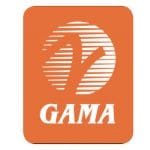Airbus Begins Assembly of Racer Compound Helicopter
by Mark Huber – March 25 2021 AINonline
Airbus Helicopters is pushing off the first flight of its compound Racer—which stands for rapid and cost-efficient rotorcraft—to 2022. A company spokesman said the delay was the result of “the slowdown of several production lines caused by the pandemic.”
When announced in 2017, Airbus said Racer would begin flights in 2020. Despite the delays, the program already has achieved significant milestones, including passing critical design review in 2019 and more recently the manufacturing of long-lead items in 2020, with major components such as the canopy, the composite side shells, and the tail boom already delivered. Assembly of major subassemblies also started last year, and the spokesman said Airbus Helicopters expected to launch final vehicle assembly in “the coming weeks” at its production facility in Merignane, France.
The fuselage, a hybrid of metal and composites, is scheduled to be delivered this month. The main rotor blades are from the super-medium Airbus H175 and the avionics are an adaptation of Airbus’s familiar Helionix system. The aircraft employs conventional, as opposed to fly-by-wire, flight controls. Altogether, more than 40 partners from 12 countries are participating in the project providing key components. “It is a very active collaboration,” said program director Brice Makinadjian.
The Racer is designed to cruise nearly twice as fast as a conventional helicopter, with cruise speeds up to 220 knots. At cruise speed, roughly half the helicopter’s lift comes from its fixed wing. Target range is 400 nm and in executive configuration, the aircraft will be able to seat six to eight passengers. The aircraft is derived from the European Commission’s H2020 research program as part of the Clean Sky 2 initiative. It is powered by a pair of 2,500-shp Safran Aneto-1X engines that provide 25 percent more power than similar-sized engines.
Up to a 15 percent reduction in fuel burn can be achieved when one of the two engines is placed in standby mode during cruise flight, a configuration Safran calls “Eco Mode.” Makinadjian said the standby engine can be spooled up in ten seconds or less and that the fixed wing-mounted propulsors can operate from either or both engines. “An advantage is the simplicity of the system. It works like a twin-engine helicopter. All the drive system is connected and everything is linked,” he said.




